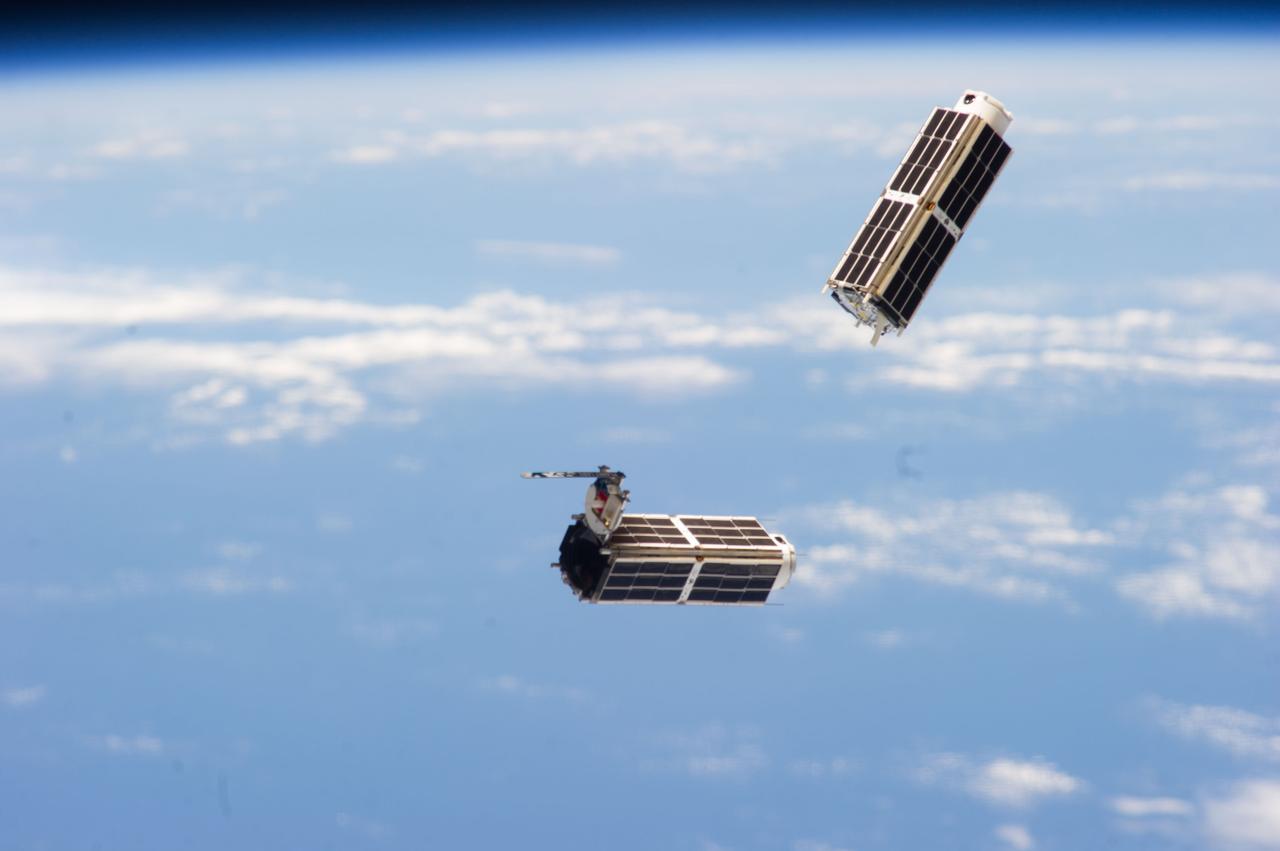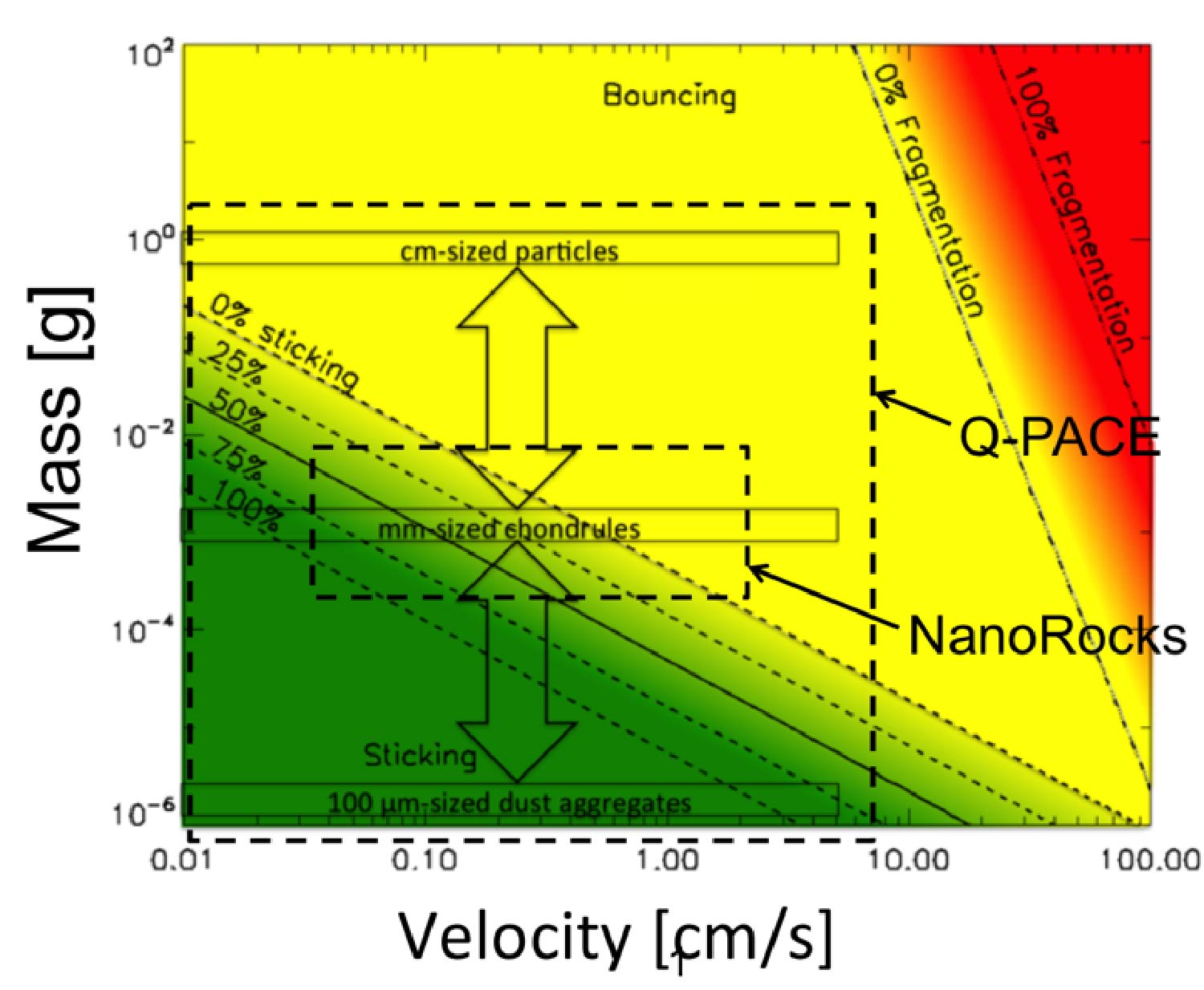
CubeSats
Dust growth experiments date back to the late 90s where the hit-and-stick behavior of µm-sized grains demonstrated a possible mechanism for grain growth inside the PPD. Later experiments on larger grains have shown that, at the relative velocities expected in the PPD, sticking upon collisions yields to bouncing and fragmentation. Figure 1 shows a dust collision model integrating the results of a decade of experimental data.
The transition between grain sticking and bouncing remains relatively unexplored experimentally as very slow collisions of mm- and cm-sized particles can only be performed under microgravity conditions. Micro-gravity platforms used to perform these experiments include drop towers (up to 9 s of free-fall time in Bremen, Germany), parabolic aircrafts (~ 20 s), and sub-orbital rockets (~ 180 s). Depending on the platform used, each experiment campaign can deliver from a few to 100 data points which makes a better characterization of the sticking to bouncing transition a slow and arduous process.
In this context, the rise of miniaturized orbital payloads such as CubeSats make it possible to collect the required amount of data. Indeed, the small and cost-effective hardware does not require long development times and is adapted to the efficient collection of high amounts of grain collision data during years on orbit (usually Low Earth Orbit).
A first miniaturized payload (1.5U in CubeSat units), NanoRocks, flew on the International Space Station (ISS) from September 2014 to March 2016. This payload recorded collisions between mm-sized particles in microgravity (https://sciences.ucf.edu/physics/microgravity/flight-projects/nanorocks/). The data analysis has demonstrated that the unprecedented amount of grain collision data collected by NanoRocks allowed for a statistical approach to the data analysis rather than the classical measurement of individual collisions.
Building on the success of the NanoRocks payload, we are currently developing a 3U CubeSat to study collisions between cm-, mm-, and sub mm-sized particles. The CubeSat Particle Aggregation and Collision Experiment (Q-PACE) is a 3U satellite hosting an Experiment Test Cell (ETC) containing the particles, a camera to record the particle collisions, and all the avionics necessary to guarantee for the satellite’s autonomy during its time on orbit (https://sciences.ucf.edu/physics/microgravity/flight-projects/q-pace/). The collected data will be transferred to the Q-PACE ground stations at UCF and the University of Arkansas. Q-PACE is currently in manufacturing and is scheduled to launch with Virgin Galactic’s LauncherOne on the NASA ELaNa XX in 2019.
Researchers: Julie Brisset, Ph.D, Josh Colwell, Ph.D, Phil Metzger Ph.D, Douglas Maukonen

